Man & machine
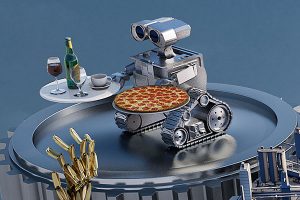
Robots as pizza chefs
Machines have taken over a Parisian fast-food restaurant: from taking orders through to preparing the Italian speciality – at ‘Pizza Pazzi’, robots do all the work.
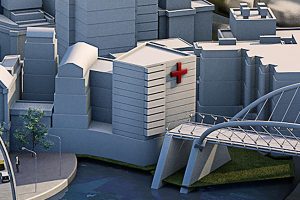
Artificial stimulus
The first pacemakers were designed as early as the 1950s to treat patients whose heartbeat was too slow. The first one was implanted in Stockholm on 8 October 1958.
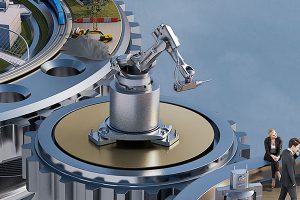
Man or machine?
The Turing Test proposes that artificial intelligence exists when – in a dialogue with a computer or robot – we can no longer distinguish whether we are dealing with a real person or not.
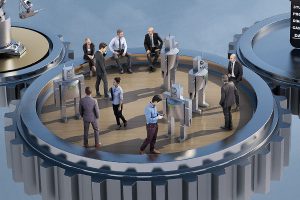
Optimized human
A cyborg (short for cybernetic organism) is a living creature that has been technologically augmented or enhanced. This makes it – not considering animal cyborgs – a form of human enhancement.


Good robot, bad robot
The Zukunftsinstitut notes that the ‘dramaturgical stage of AI’ has changed significantly. For example, there are fewer and fewer films in which robots take over the world and enslave humanity.
Instead, the AI fantasies are moving away from space into our own four walls: often, the robots shown behave like humans – they show emotions and are part of the family; or the other way around: the people depicted look and act like machines. This has led the Zukunftsinstitut to the question of whether humans could really be robots – they only haven’t noticed yet …
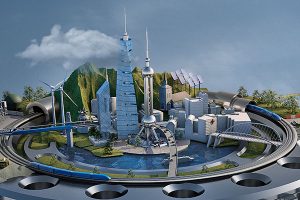
Intelligence becomes artificial
In 1955, John McCarthy first coined the term ‘artificial intelligence’. At the time, however, AIs did not have any real intelligence, but were rather weak AI algorithms, i.e., systems that only execute what humans have designed using programs.
While more and more activities are being carried out by smart systems, inevitably reducing jobs, digitisation also creates many new occupational fields and jobs. The following are considered professions of the future: tele-surgeon, VR architect, pensioner coach, digital genealogist, urban farmer.
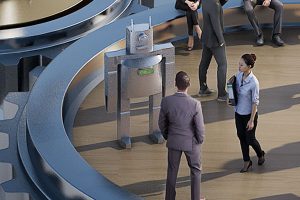
Co-working rethought
Last year, the IFR (International Federation of Robotics) forecast that around two million new industrial robots would be installed in factories worldwide between 2020 and 2022 – a big step towards more flexibility in production.
So far, humans and machines have mostly been in the same workspace, performing tasks one after the other. However, now and then they both work on the same part at the same time and even interact in real time. To do this, robots must be able to recognise the human voice or gestures. This form of human-robot cooperation offers many opportunities for companies. Soon, collaboration could be responsive, i.e., instead of merely moving simultaneously, the robot reacts to the movements of the worker in real time.
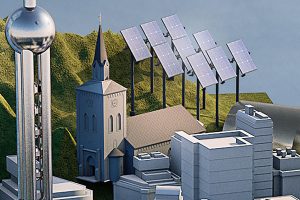
AI conquers the world
In the US, there is a church for Artificial Intelligence. Its name: Way of the Future.
Masterminds like Stephen Hawking, Bill Gates and Elon Musk warn of the overwhelming power of AI.
The humanoid robot Sophia from Hong Kong imitates human gestures and facial expressions, is able to answer specific questions and can have simple conversations about predefined topics such as the weather. In October 2017, Saudi Arabia granted Sophia citizenship.
The Shibuya Mirei chatbot, on the other hand, has been an official resident of Tokyo since 2017.
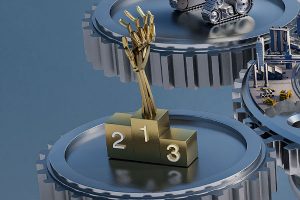
Human ingenuity for innovative technology
Since 2006, the European Inventor Award has been honouring inventors who make a significant contribution to technological progress and economic growth – and thus improve our lives. Often, the focus is on the interaction between man and machine.
2013: Cutting-edge prosthetics technology by David Gow
The revolutionary prosthesis for the arm and hand with mechanically moving fingers enables the wearer to carry out routine tasks.
2016: ‘Bionic’ knee and ankle prosthesis by Hugh Herrs
Thanks to the invention of bionic knee and ankle prostheses, people with amputated limbs can live without mobility restrictions and even compete as world-class athletes.
2018: Smart ‘mixed-reality’ HoloLens headset by Alex Kipman
The HoloLens ‘mixes’ reality with holographic overlays. Businesspeople as well as patients having to undergo an operation could benefit from this – the technology, for example, enables holographic teleconferencing and is used in computer-aided surgery.
2019: Vision for vehicles by Amnon Shashua
The driver assistance system developed in the field of ‘computer vision’ detects traffic hazards in real time and prevents collisions – by means of a regular one-eyed camera and highly developed artificial intelligence.
2021: Fingerprint sensors with bio detection by Bo Pi and Yi He
This fingerprint sensor is the first able to recognise both fingerprint patterns and the presence of blood flow. This innovation is now used in many smartphone models – and offers millions of users an unprecedented level of security.

